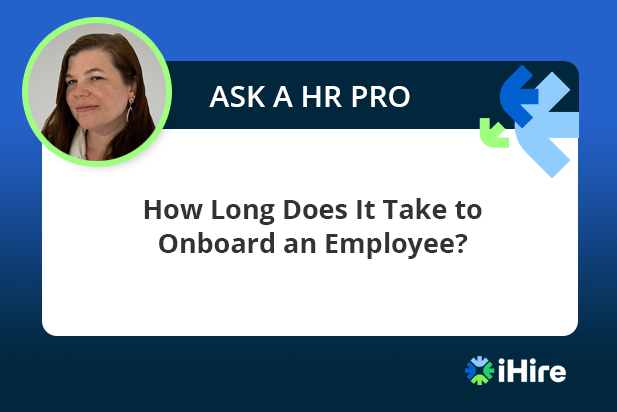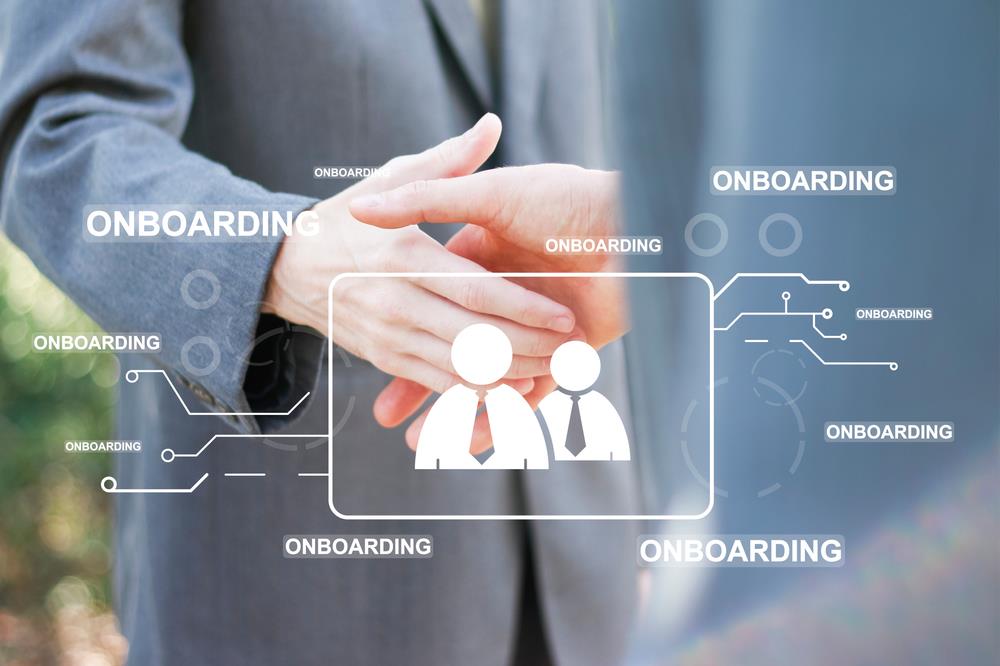- Employer Resources
- |
- Last Updated: October 28, 2022

Ask an HR Pro: How Long Does It Take to Onboard an Employee?
The onboarding experience is an extremely important transition period for new employees. They’re learning about their new job and your company, and you’re training them and learning how they operate. There may be some hiccups along the way, but if you’re onboarding an employee effectively, they should have all the information they need to succeed by the end of the process.
But how do you know when onboarding is complete? Three months after welcoming a new employee? Six months? In this Ask an HR Pro, we talked to Vickie Krolak, iHire HR Consultant, to determine what a good onboarding timeframe might be, as well as other onboarding best practices.
Create Your Account Today
Common Timelines for Onboarding an Employee
So, how long does it take to onboard an employee?
“It depends on the role and the person,” Krolak said. “In most cases, three months is typical. With higher-level roles, it could be six months or more. In any case, there should be a well-defined onboarding training plan with expectations for what the employee should be able to do and understand during the first week, month, three months, and beyond.”
Krolak said that the most hands-on portion of onboarding will generally be during the first two months of the employee starting at their position. After that, the specifics of the job will determine how much more training the employee will need. For example, if it’s an upper-management or C-suite position, it might take a year for them to get fully up to speed. Creating a plan with milestones you want the employee to hit will help you understand what a realistic timeline will be.
And remember, onboarding doesn’t start on the employee’s first day but instead when the employee accepts the job offer. The first few weeks before their official start date should include correspondence between the manager and the employee to keep them engaged, so be sure to factor that into your timeline. This is especially important for virtual employees.

Determining How Long Onboarding Needs to Be
If you’re hiring for a new position or don’t have an onboarding plan already, there are some employee onboarding best practices you can use to help figure out how much time it’ll take.
“Regular check-ins during the onboarding phase are important for both the employees and managers,” Krolak advised. “This will allow the employees to share any challenges they are facing and let managers ask questions to gauge how they feel about their new role.”
Check-ins also present managers with the opportunity to give feedback to the employee. They can give kudos when the employee is doing well and provide constructive advice on areas the employee can improve. If the employee needs additional training, they can discuss why and what it looks like.
Another way to get feedback from an employee is to use onboarding surveys. These can be administered after a set period, like 30 or 60 days, and followed up with a 90-day “fresh eyes interview.” Fresh eyes interviews, Krolak explained, are designed to get truthful opinions from the new employees on how their onboarding is really progressing. The interviews should be informal and off the record, so try to create a psychologically safe environment for employees to express their feelings. Include questions about their onboarding experience and use their feedback to adjust if necessary.
Regardless of how long the process takes, the important thing is that you’re keeping the new hire involved throughout with feedback and positive reinforcement.
“The goal of onboarding should be to have an engaged, productive, and successful new hire,” Krolak said. “With that comes increased retention and possibly referrals for open positions the company could be hiring for.”
For more onboarding tips and tricks, head to our Employer Resource Center.

Originally Published: October 28, 2022




